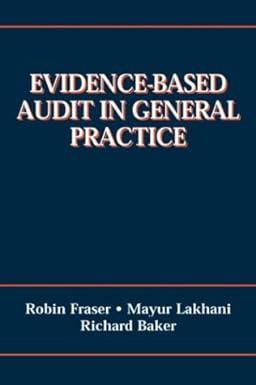Answered step by step
Verified Expert Solution
Question
1 Approved Answer
Assuming that the current Term Structure of yield to maturity for par bonds of a company is as follows: On the run yields: Year On-the-run
Assuming that the current Term Structure of yield to maturity for par bonds of a company is as follows:
On the run yields:
| Year | On-the-run |
| 1 | 4.40% |
| 2 | 5.40% |
| 3 | 6.40% |
- Find the price of a 3-year, 8% annual coupon bond issued by that company. (5 points)
- Goldman Sachs uses that fixed-rate coupon bond to create a floating-rate note with the following coupon: Current Spot Rate + 300 basis points. Assuming an interest-rate volatility of 10%, estimate the value of this Floating Rate Note. For this, you will have to 1) calibrate a binomial tree based on the given yields-to-maturity for the par bonds, 2.a.) use the future expected spot rates found in the tree to compute the actual coupon rates paid at reset at every node, that is, for example, at the R1,L node, you can set the coupon to be paid as R1,L + 300 basis points to determine the coupon that will be paid at time 2, 2.b.) for future nodes that can be reached from 2 different prior nodes, the expected coupon paid is the weighted average of the coupon determined at prior reset time, 3) discount the present value of the cash flows of the bond as we did in the callable bond examples. (30 points)
- The Fed decides to stop intervening and increasing the money supply and tightens interest rate. This causes an upward parallel shift in the term structure by 100 basis points. Establish the new price of the 3-year, 8% annual coupon bond issued by that company. (10 points)
- Compute the new price of the Floating Rate Note. You have to re-calibrate a new tree at the new interest rate level before you can price the bond as you did in part b. (10 points)
- Using the following approximation of duration: (Price after Shock Price before Shock) / ((Price before + Price after) / 2) * Change in Interest Rate), compute the estimated duration for both the fixed rate and the floating rate bond. Which of the two bonds is least sensitive to changes in interest rates? Why? (10 points)
Step by Step Solution
There are 3 Steps involved in it
Step: 1

Get Instant Access to Expert-Tailored Solutions
See step-by-step solutions with expert insights and AI powered tools for academic success
Step: 2

Step: 3

Ace Your Homework with AI
Get the answers you need in no time with our AI-driven, step-by-step assistance
Get Started


